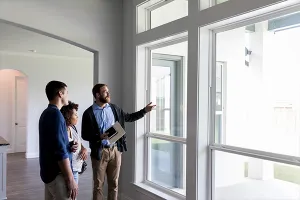With the steady rise in home prices over the past several years, more house hunters are showing willingness to accept trade-offs in order to purchase a home—a trend only growing, finds the latest wave of The America at Home Study.
The national survey of nearly 16,000 respondents across four waves since March 2020 found that in 2025 buyers were most willing to accept the following trade-offs:
- Smaller home: 40% (up from 21% in 2022)
- Smaller or no garage: 33% (up from 22%)
- Smaller room sizes: 25% (up from 16%)
- Rent-to-own model: 50% (up from 33%)
- Modular or manufactured home: 32% (up from 22%)
“The problem is that a lot of the housing stock isn’t fitting what Americans increasingly say they’re looking for,” says Teri Slavik Tsuyuki, co-founder of America at Home and co-chair of the Global Wellness Institute’s Wellness Communities & Real Estate Initiative.
Compared to 2022, home buyers appear increasingly more willing to accept a smaller home—40% in April 2025 compared to just 21% in October 2022. They’re also much more willing to accept smaller garages—33% versus 22%—and smaller room sizes at 25% versus 16%.
The survey notes the majority—64%— are now made up of one- and two-person households, and these smaller households are finding they can make do with less space. Instead, they’re prioritizing flexible, multi-use spaces that support wellness, the study finds.

Small and Wellness Is Craved
Home buyers appear to be prioritizing wellness-inspired qualities in a home over the home’s size. The survey finds the most desired features they would be willing to pay for tend to support their health, create cost savings and lessen their environmental footprint.
The top features and upgrades respondents said they would prioritize include:
- Better equipped and more modern kitchen for cooking: 29%
- More efficient insulation, HVAC, lighting and appliances: 25%
- Whole house water filtration: 22%
- Whole house, always-on quality indoor air filtration: 22%
- Solar battery storage or back-up power generator: 18%
Meanwhile, community amenity priorities appear to be reflecting a longing for joy, health and connection, the study notes. The top five desired community features include:
- Access to nature for outdoor activities: 54%
- Walkability to coffee shops and casual eateries: 49%
- Trails: 48%
- Small neighborhood parks with seating and shade: 45%
- Large parks and open space with fields and green areas: 44%
“Today’s consumers are trading space for experience and connection,” says Belinda Sward, co-founder of the America at Home Study and founder of Strategic Solutions Alliance. “They’re willing to trade home and yard size for parks, trails and everyday places where they feel known. That sense of everyday connection to nature and neighbors drives values, belonging and well-being while reinforcing their sense of safety—the primary way people define home.”









